
Fundamentals
The concept of Osùn Ufie Heritage, as we understand it through the lens of ancestral wisdom and contemporary insight, speaks to a profound connection between the elemental, the aesthetic, and the spiritual dimensions of textured hair care, particularly within Black and mixed-race communities. The very designation, “Osùn Ufie,” calls to mind a convergence of ancient materials and their culturally ascribed significance. At its fundamental core, this heritage refers to the enduring traditions and knowledge systems surrounding the use of naturally occurring red pigments and substances, prominently including Camwood (Pterocarpus Osun), for the beautification, maintenance, and symbolic adornment of hair across various African cultures and their diasporic expressions. These practices are far from simple cosmetic applications; they are profound acts of cultural continuity, identity expression, and holistic wellness.
Consider Osùn, often recognized as the powdered heartwood of the camwood tree. This substance, known for its deep reddish hue, has been a central element in West African traditions, especially among the Yoruba people, where it is also identified with the river deity Ọ̀ṣun, a goddess associated with beauty, fertility, love, and sweet waters. The term “Ufie” reinforces this connection to redness, pigment, and the transformative power these elements possess.
This heritage, then, represents more than a collection of recipes; it encapsulates a living legacy where hair is perceived as a sacred extension of the self, a conduit for spiritual energy, and a canvas upon which lineage and communal bonds are expressed. The rituals surrounding Osùn Ufie are acts of reverence, honoring the body as a temple and acknowledging the hair’s place within a continuum of ancestral practices.
Osùn Ufie Heritage fundamentally embodies the deep ancestral knowledge and cultural practices concerning the use of natural red pigments, like camwood, in the holistic care and adornment of textured hair, extending far beyond simple aesthetics.
The initial apprehension of Osùn Ufie Heritage involves recognizing its tangible elements alongside its intangible spiritual dimensions. This isn’t a mere historical curiosity; it is a vital wellspring of understanding for anyone seeking a deeper connection to their textured hair and its cultural roots. It establishes a groundwork for appreciating how our ancestors approached hair care not as an isolated task but as an integral aspect of communal life, personal identity, and spiritual alignment.
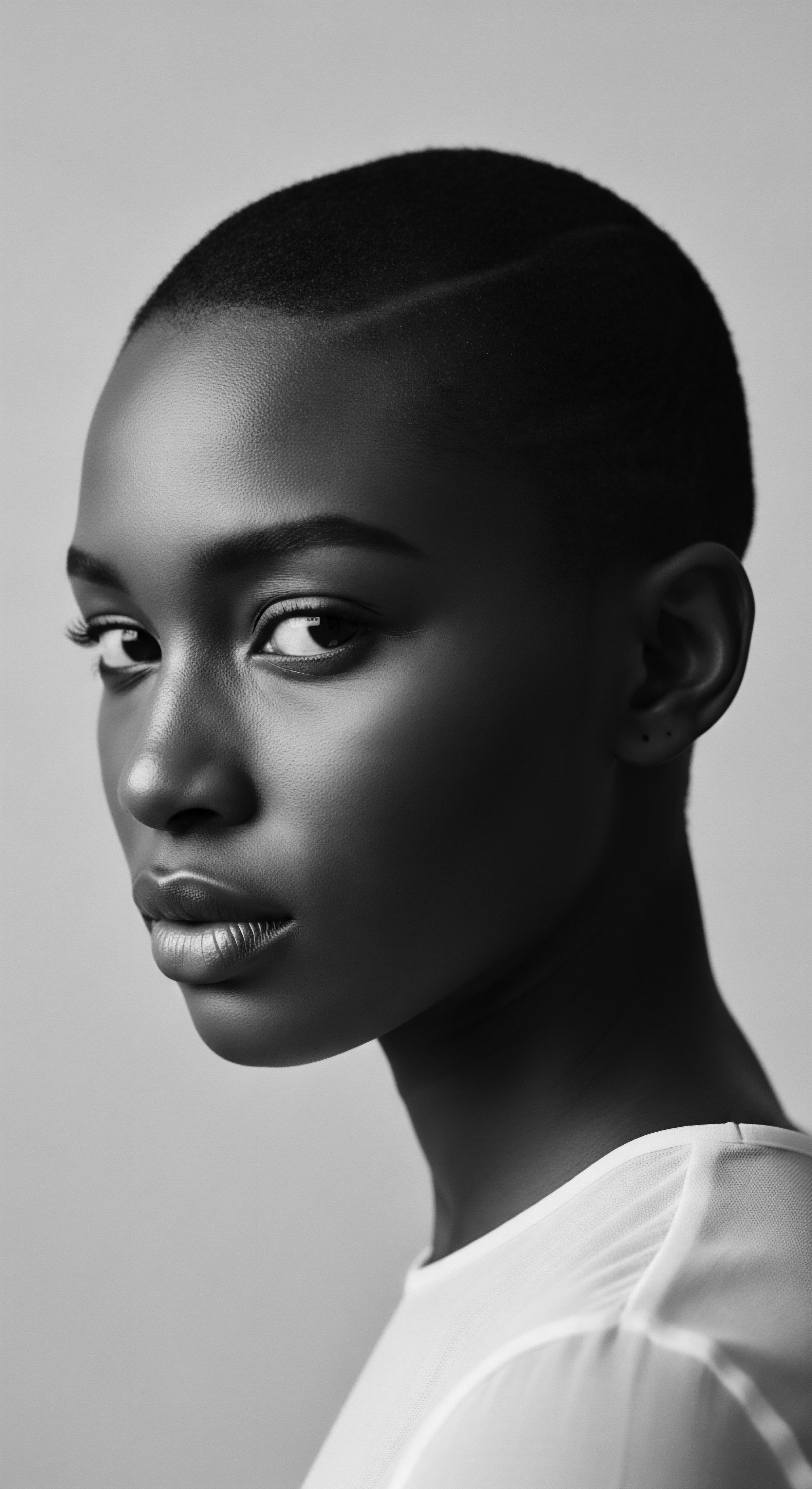
The Material Roots ❉ Unpacking Osùn’s Substance
The primary material associated with Osùn Ufie Heritage, Camwood Powder, is derived from the heartwood of the Pterocarpus osun tree, native to West Africa. This powder imparts a distinctive reddish-brown color, and its traditional preparation often involved grinding the wood into a fine dust which could then be mixed with water, oils, or other natural ingredients to form a paste. For generations, this ingredient served as a cornerstone for various applications.
It served as a cleanser, a conditioner, and a protective coating for the hair and scalp. The knowledge of its sourcing, processing, and careful application was passed down, typically from elder women to younger generations, ensuring the continuity of these practices.
Beyond its color, traditional knowledge ascribes various properties to camwood. It has been used for its perceived ability to cleanse, soothe the scalp, and impart a subtle sheen to the hair. This practical utility, coupled with its symbolic value, firmly entrenches camwood within the heritage of textured hair care. It represents a resourceful relationship with the natural environment, where the earth provides not only sustenance but also the means for beauty and spiritual expression.
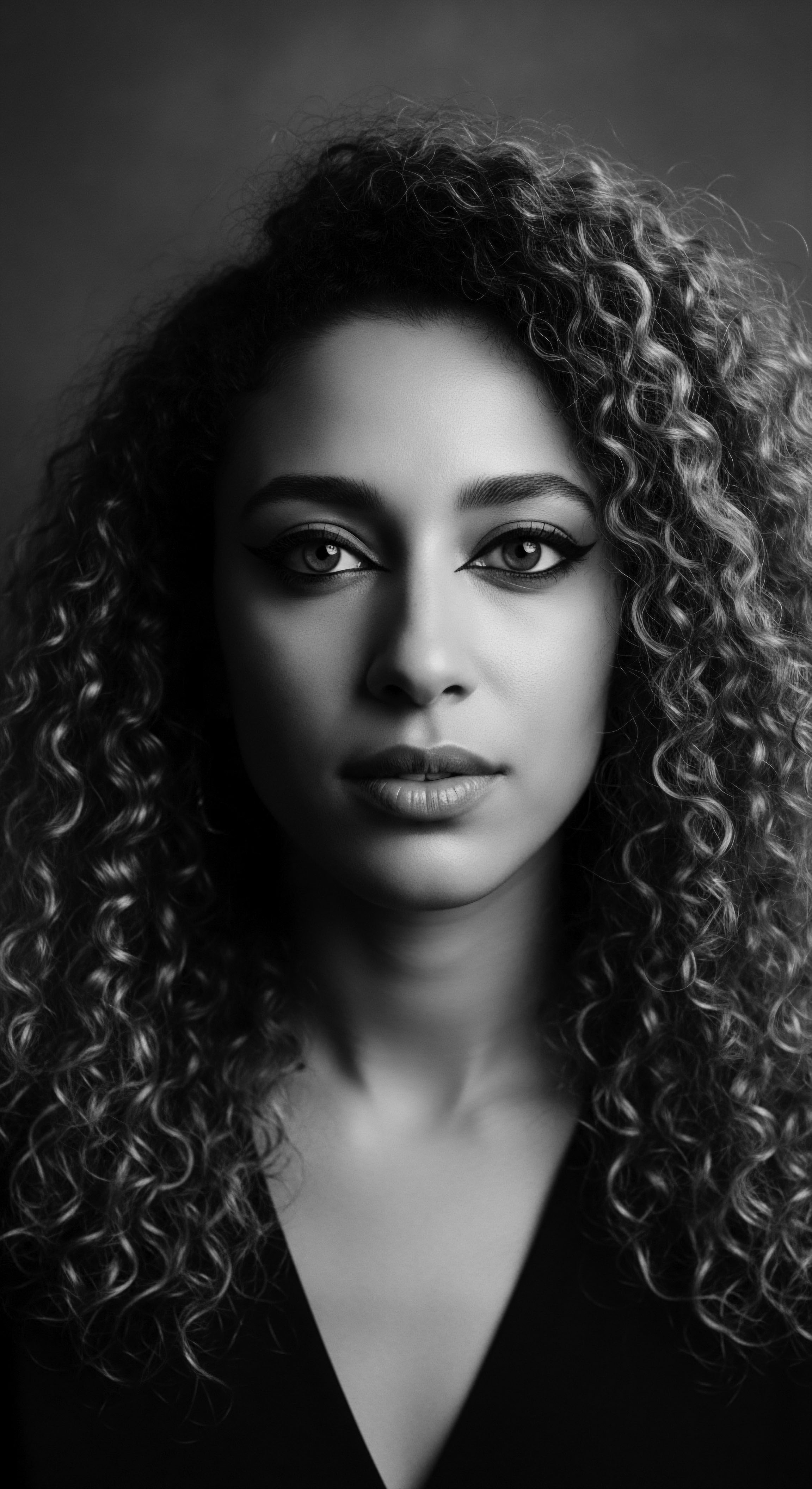
Ancestral Connections ❉ Hair as a Sacred Extension
For many African societies, hair holds profound spiritual and social significance, far exceeding a mere biological attribute. It is considered a direct link to the divine, to ancestors, and to one’s lineage. Hairstyles, and the substances used to create and maintain them, are communicative canvases. They convey complex information about an individual’s social status, age, marital status, and even spiritual beliefs.
The application of Osùn Ufie, in this context, was never casual. It was an act charged with meaning, a ritual that affirmed one’s place within the community and connection to the ancestral realm.
The use of Red Pigments, such as Osùn, in African hair rituals also carries deep symbolism. Red often symbolizes vitality, life, blood, fertility, and protection across many African cultures. When applied to hair, it could denote a rite of passage, a protective measure against negative influences, or a declaration of a specific spiritual affiliation.
This cultural coding of color, particularly red, makes Osùn Ufie a powerful visual and energetic marker within the historical tapestry of Black and mixed-race hair experiences. The color speaks silently, yet powerfully, of belonging and deep-seated traditions.
This fundamental understanding of Osùn Ufie Heritage lays the groundwork for further exploration, inviting us to look beyond the surface of cosmetic application and to see the profound cultural narratives embedded within each strand of textured hair. It compels us to acknowledge that hair care, in this historical context, was an act of profound self-definition and communal affirmation.
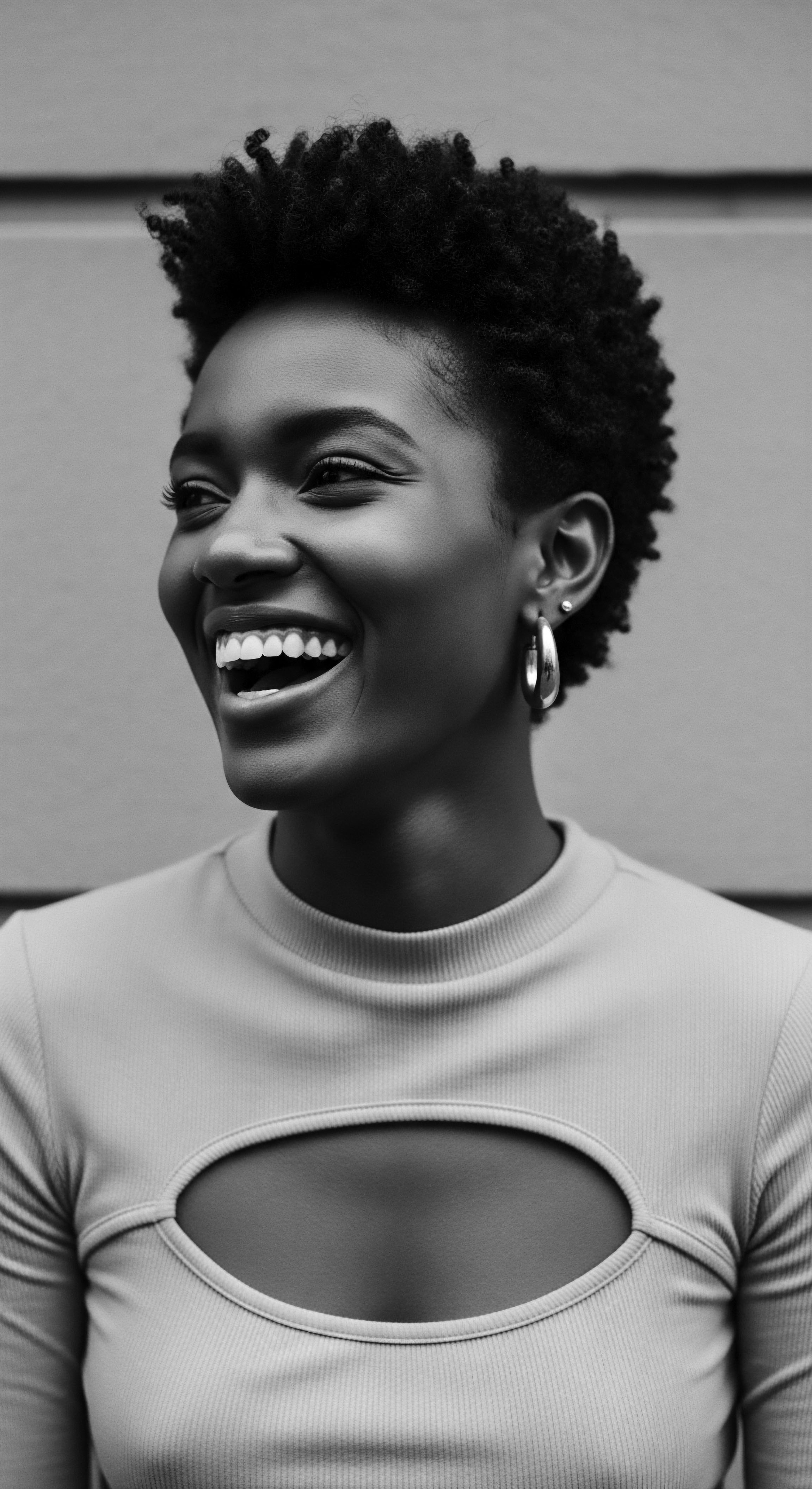
Intermediate
Moving beyond its fundamental definition, an intermediate understanding of Osùn Ufie Heritage reveals a more intricate web of cultural practices, communal bonds, and emerging scientific correspondences. This deepened view recognizes the heritage not simply as the use of camwood, but as a holistic system of care that addresses hair’s physical needs while honoring its deep spiritual and communal resonance. It is about understanding the ‘why’ behind the ‘what’ and appreciating how ancient wisdom, often perceived as merely traditional, carries practical efficacy validated by contemporary observations.
The historical application of Osùn Ufie extended beyond individual beautification, serving as a powerful communal activity. Hairdressing in many African societies was, and remains, a shared experience, often occurring in communal spaces or within familial settings. Mothers, aunts, and grandmothers would gather, their hands moving with practiced rhythm, braiding and anointing hair.
This communal aspect served to strengthen social ties, transmit oral histories, and pass down the detailed techniques and knowledge associated with hair care from generation to generation. The rhythmic motion of styling, the shared laughter, the whispered stories—these elements transformed a practical grooming activity into a profound act of collective memory and cultural preservation.
Osùn Ufie Heritage transcends simple cosmetic application, representing a holistic system of care deeply intertwined with communal activities and cultural transmission across generations.

The Tender Thread ❉ Practical Applications and Holistic Benefits
The practices associated with Osùn Ufie Heritage speak to an intuitive understanding of textured hair’s unique needs. Textured hair, with its diverse curl patterns and varying porosities, requires thoughtful care to maintain its resilience and health. Traditional preparations incorporating Osùn Powder were often blended with natural emollients and oils such as Palm Oil or Shea Butter.
These additions created conditioning pastes that protected the hair from environmental stressors, minimized breakage, and promoted suppleness. This holistic approach recognized that true beauty stemmed from health and vitality, not just outward appearance.
Consider the meticulous preparation involved in creating these hair treatments. The camwood, once processed into a fine powder, would be carefully combined with other botanicals and fats, often selected for their purported nourishing or protective qualities. The texture of these preparations varied, from thick masques designed for deep conditioning to lighter rinses that imparted a protective sheen. This nuanced application reflected a sophisticated understanding of how different preparations interacted with the hair and scalp, tailored to specific needs or ceremonial purposes.

Ingredients and Their Traditional Roles:
- Camwood (Osùn) ❉ Ground from the heartwood of Pterocarpus osun, traditionally used for its red pigment and cleansing, soothing properties on the scalp. It was also believed to have antiseptic qualities.
- Shea Butter ❉ A rich emollient derived from the shea nut, prized for its moisturizing and protective abilities for both skin and hair. It helps to seal moisture and prevent dryness.
- Palm Oil ❉ A traditionally abundant oil in West Africa, used for its conditioning benefits and to add shine to hair. It also has deep cultural and economic significance.
- Indigo ❉ While not red, indigo was sometimes used alongside or in contrast to red pigments for hair and body decoration, particularly in ceremonial contexts, offering deep blue tones.
The significance of Osùn Ufie extends into the realm of spiritual well-being. Hair, as a conduit to the spirit, received careful attention, mirroring the reverence given to the head as the seat of one’s Ori, or inner spiritual essence, among the Yoruba people. The act of applying Osùn Ufie was thus a form of spiritual fortification, a gentle offering to the self and to the ancestral energies that guided life. It was a tangible connection to a worldview where the physical and metaphysical were deeply intertwined.

Echoes from the Source ❉ The Enduring Wisdom
The continuity of Osùn Ufie Heritage is a testament to the enduring wisdom embedded in ancestral practices. Despite historical disruptions, including the transatlantic slave trade and colonization, elements of these hair traditions persisted, adapting and evolving in new geographical contexts. Enslaved Africans, stripped of many aspects of their cultural identity, continued to practice hair care rituals, often adapting available materials and techniques.
This act of maintaining hair traditions, even under duress, served as a quiet yet powerful form of resistance and cultural preservation. The spirit of Osùn Ufie, though perhaps not always with the literal camwood, lived on in the dedication to holistic hair care and the recognition of hair as a profound marker of identity.
The influence of Osùn Ufie Heritage is visible in the diaspora’s continued emphasis on natural ingredients, protective styling, and communal hair practices. While modern product formulations have changed, the underlying principles of nourishing, protecting, and adorning textured hair with respect for its unique characteristics remain remarkably consistent with ancestral approaches. This intermediate understanding builds a bridge from the historical origins to the living traditions of today, demonstrating the resilience and adaptability of Black and mixed-race hair culture.
| Traditional Ingredient Osùn (Camwood) Powder |
| Traditional Use in Osùn Ufie Heritage Cleansing, scalp soothing, protective pigment, symbolic adornment. |
| Modern Hair Care Parallel/Benefit Natural dye, anti-inflammatory, antioxidant, mild exfoliant for scalp health. |
| Traditional Ingredient Shea Butter |
| Traditional Use in Osùn Ufie Heritage Deep conditioning, moisture sealing, hair protection from elements. |
| Modern Hair Care Parallel/Benefit Emollient, moisturizer, reduces frizz, provides thermal protection, strengthens hair cuticle. |
| Traditional Ingredient Palm Oil |
| Traditional Use in Osùn Ufie Heritage Nourishment, shine, detangling aid. |
| Modern Hair Care Parallel/Benefit Fatty acid rich conditioning agent, adds gloss, supports elasticity. |
| Traditional Ingredient Botanical Infusions (various leaves, barks) |
| Traditional Use in Osùn Ufie Heritage Herbal rinses for strength, growth, and scalp health. |
| Modern Hair Care Parallel/Benefit Phytochemicals, vitamins, minerals for scalp stimulation and hair fortification. |
The journey to an intermediate apprehension of Osùn Ufie Heritage reveals a nuanced relationship between nature, culture, and individual agency. It portrays hair care as an interwoven aspect of life, rich with cultural memory and practical application, continually adapting through time while holding fast to its ancestral roots.

Academic
An academic conceptualization of Osùn Ufie Heritage requires a rigorous exploration, moving beyond descriptive accounts to analyze its underlying socio-cultural, ethnobotanical, and physiological implications, particularly for textured hair within Black and mixed-race ancestries. The meaning of Osùn Ufie Heritage, at this expert level, is the scholarly designation for the intergenerational transmission of specific material culture and associated ritualistic practices, centered around the application of red pigments, chiefly derived from Pterocarpus osun (camwood), to natural hair and scalp as a means of conferring aesthetic value, social status, spiritual protection, and embodied cultural resistance across diverse diasporic contexts. This framework scrutinizes how this heritage acts as a dynamic repository of traditional ecological knowledge, a locus for identity construction, and a tangible manifestation of ancestral memory in the face of historical forces seeking to dismantle indigenous practices.
The scholarly examination of Osùn Ufie Heritage positions it as a critical area within ethnobotanical studies and the anthropology of material culture, specifically concerning hair. The botanical identity of Pterocarpus osun, the camwood tree, provides the elemental core. Research into its phytochemical composition has begun to elucidate the scientific underpinnings of its traditional efficacy. For instance, studies indicate that various species of Pterocarpus, including P.
osun, possess documented anti-inflammatory, antibacterial, and antioxidant properties. These properties lend scientific credence to the traditional uses of camwood for scalp health, wound healing, and general skin/hair protection, thereby validating generations of empirically derived knowledge. This scientific alignment with ancestral practices underscores the profound sophistication of traditional African pharmacopoeia, where observation and iterative practice often predated formal chemical analysis.
Academic inquiry into Osùn Ufie Heritage defines it as the scholarly study of intergenerational practices involving red pigments, especially camwood, applied to textured hair, serving as a powerful conduit for cultural identity, social status, and ancestral memory, validated by ethnobotanical science.

Ethnobotanical Complexities and Physiological Responses
The application of Osùn as a cosmetic and therapeutic agent extends beyond mere coloration. Its finely ground particulate matter, when mixed with water or lipids, creates a paste. This paste adheres to the hair shaft and scalp. From a biophysical perspective, the particulate nature of Camwood Powder may contribute to its protective qualities by forming a physical barrier against environmental aggressors.
The presence of tannins and flavonoids, common in Pterocarpus species, could also explain its astringent and antimicrobial effects on the scalp, which would deter fungal or bacterial proliferation that might otherwise impede healthy hair growth or cause irritation. The subtle, non-permanent tint provided by the red pigment, often associated with ochres and iron oxides found in natural clays, also implies a cultural preference for hair that visually connected individuals to elemental earth, signifying life and vitality.
The study of hair as a bio-cultural artifact reveals that practices within Osùn Ufie Heritage are not simply performative; they induce physiological responses. The regular massaging of the scalp during application, for example, promotes blood circulation, a recognized factor in follicle stimulation and nutrient delivery. The emollients used in conjunction with Osùn, such as shea butter or palm oil, provide lipids that can strengthen the hair’s hydrophobic outer layer, the cuticle, reducing protein loss and maintaining moisture equilibrium, particularly beneficial for the structural characteristics of coily and curly hair which are more prone to dryness due to their elliptical shape and fewer overlapping cuticle layers. This convergence of traditional ritual and verifiable physiological benefit elevates the heritage from folklore to a sophisticated, embodied science.

Sociopolitical Dimensions and Resistance through Adornment
The historical trajectories of Black and mixed-race hair are undeniably intertwined with sociopolitical narratives of power, oppression, and resistance. Within this complex history, Osùn Ufie Heritage acquires a meaning steeped in defiance. During periods of forced cultural assimilation, particularly throughout the transatlantic slave trade and subsequent colonial eras, hair was often a primary target for control and derogation. Enslaved Africans were compelled to shave their heads or adopt styles deemed “acceptable” by their oppressors, aiming to strip them of their cultural markers and identity.
However, as documented by various cultural historians, practices related to hair often became clandestine acts of resilience. Even without direct access to traditional materials like camwood, the essence of Osùn Ufie – the reverence for textured hair, the communal care rituals, the symbolism of adornment – persisted. For instance, in West African societies, the symbolic application of red pigments, including camwood, to hair and body often denoted spiritual connection, protection, and community identity. During the era of colonial imposition, the choice to maintain such practices, even subtly, served as a defiant assertion of cultural integrity.
A particularly compelling historical example that powerfully illuminates Osùn Ufie Heritage’s connection to ancestral practices and resistance can be observed in the role of Red Pigments, Including Osùn (camwood), in Traditional Yoruba Ritual Adornment during Periods of Colonial Influence in Nigeria. Prior to European incursions, the application of such pigments to hair and skin was intrinsic to rites of passage, spiritual ceremonies, and the assertion of social status, with specific hairstyles like the Agogo signaling priestesses or married women. Anthropological studies reveal that despite systematic efforts by colonial administrations and Christian missionaries to suppress indigenous cultural expressions, including bodily adornment, the use of substances like camwood continued, albeit sometimes in altered or less overt forms, particularly within religious cults or ceremonial gatherings. This persistence was not merely aesthetic; it was an act of maintaining spiritual sovereignty and a visible link to a heritage that colonial powers sought to dismantle.
One academic account highlights how, during festivals for deities such as Oranmiyan, royal messengers known as emese would traditionally paint one side of their hair and body red with camwood and the other white with chalk, signifying the duality of the deity and their own sacred role. While direct statistical data on the frequency of clandestine camwood use during oppressive periods is scarce due to its very nature, the qualitative evidence from ethnographic accounts and historical observations strongly indicates that these acts of adornment became a quiet yet potent form of cultural self-affirmation, allowing communities to retain a vital aspect of their collective memory and identity when other forms of expression were suppressed (Houlberg, 1979, p. 355). This sustained practice, often tied to deities like Ọ̀ṣun, illustrates how the heritage of Osùn Ufie functioned as a non-verbal language of continuity, passed through embodied knowledge and communal ritual, affirming a distinct identity amidst efforts to homogenize cultural practices.
The preservation and re-emergence of these practices in the diaspora, often manifest in the “natural hair” movement, signifies a reclamation of this ancestral heritage. The contemporary appreciation for textured hair, alongside a growing interest in natural and traditional ingredients, reflects a conscious return to and reinterpretation of practices rooted in Osùn Ufie Heritage. This movement represents a decolonization of beauty standards, asserting the inherent beauty and historical significance of Black and mixed-race hair in its myriad forms.

Cultural Syncretism and Evolving Meanings
The journey of Osùn Ufie Heritage is also one of cultural syncretism, particularly as African traditions met and merged with other cultural expressions in the Americas and beyond. In regions where Yoruban cultural retention was strong, such as parts of Brazil and the Caribbean, the reverence for Osùn (Ọ̀ṣun) and associated hair practices found new expressions. The symbolic power of red, already present in various Indigenous American and European folk traditions, may have found common ground with the symbolism of camwood, allowing for a subtle integration and continuity of meaning.
The meaning of Osùn Ufie is not static; it is a living concept that continues to adapt. While its origins are deeply rooted in specific West African contexts, its interpretation in the contemporary world broadens to encompass a celebration of textured hair in all its diversity, recognizing the ancestral wisdom that informs modern hair care practices. This academic definition provides a robust framework for understanding not only the historical roots of this heritage but also its dynamic presence and continuing relevance in shaping identity and wellness today. It allows for a sophisticated appreciation of how traditional practices, once dismissed as “primitive,” are, in fact, complex systems of knowledge with profound cultural, scientific, and psychological implications.
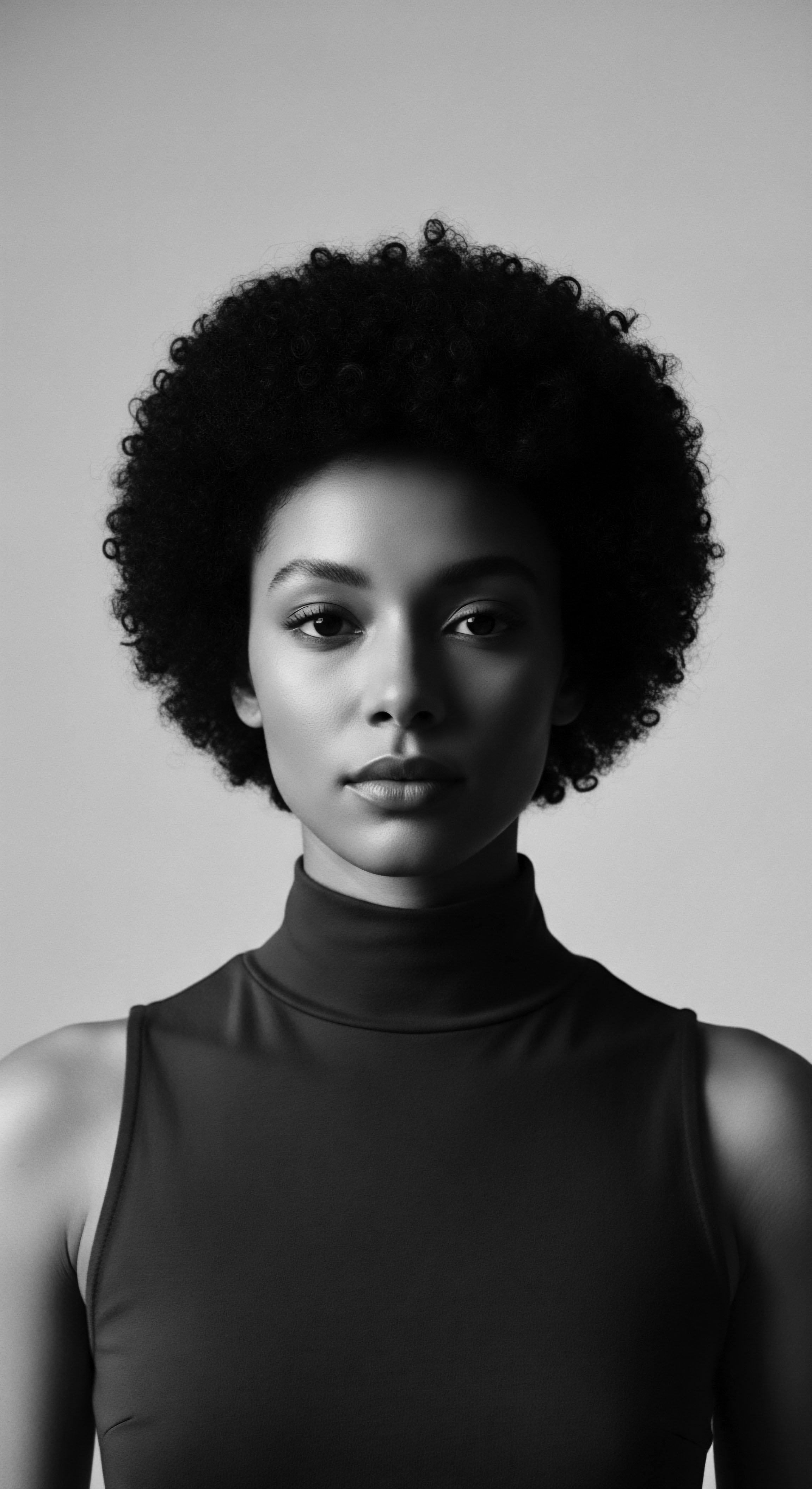
Reflection on the Heritage of Osùn Ufie Heritage
The journey through the intricate layers of Osùn Ufie Heritage guides us to a profound appreciation for the enduring spirit of textured hair. We perceive its origins in the elemental earth, its journey through ancestral hands, and its continuing resonance within contemporary identity. The very substance of Osùn, drawn from the living heartwood of the camwood tree, serves as a testament to the deep, respectful relationship African peoples have cultivated with the natural world. This relationship offered not only sustenance but also the very tools for self-expression and community building, shaping hair into a visual chronicle of generations.
This heritage compels us to consider our own relationship with our hair, encouraging a pause for deeper consideration. It prompts us to reflect upon the care rituals we choose, asking whether they align with a philosophy of nourishment and respect, echoing the reverence for hair as a spiritual extension of self. The vibrant reds of Osùn remind us of life, vitality, and the unyielding strength that flows through our ancestral lines. These practices were never simply about aesthetics; they embodied an entire cosmology, a way of being that recognized the sacredness inherent in every aspect of existence, including the crowning glory of our hair.
Looking forward, the Osùn Ufie Heritage stands as a guiding star for the future of textured hair care. It invites us to reconnect with forgotten wisdom, to question commercial norms, and to seek wellness that is truly holistic and deeply rooted in historical understanding. The whispers of ancestors, encoded in the very patterns of our coils and kinks, call us to acknowledge the inherent beauty that has always been present. This legacy is not a relic of the past; it is a living, breathing archive, continually offering insights for nurturing our hair, our selves, and our collective memory, ensuring that the soul of a strand continues to tell its ancient, powerful story.
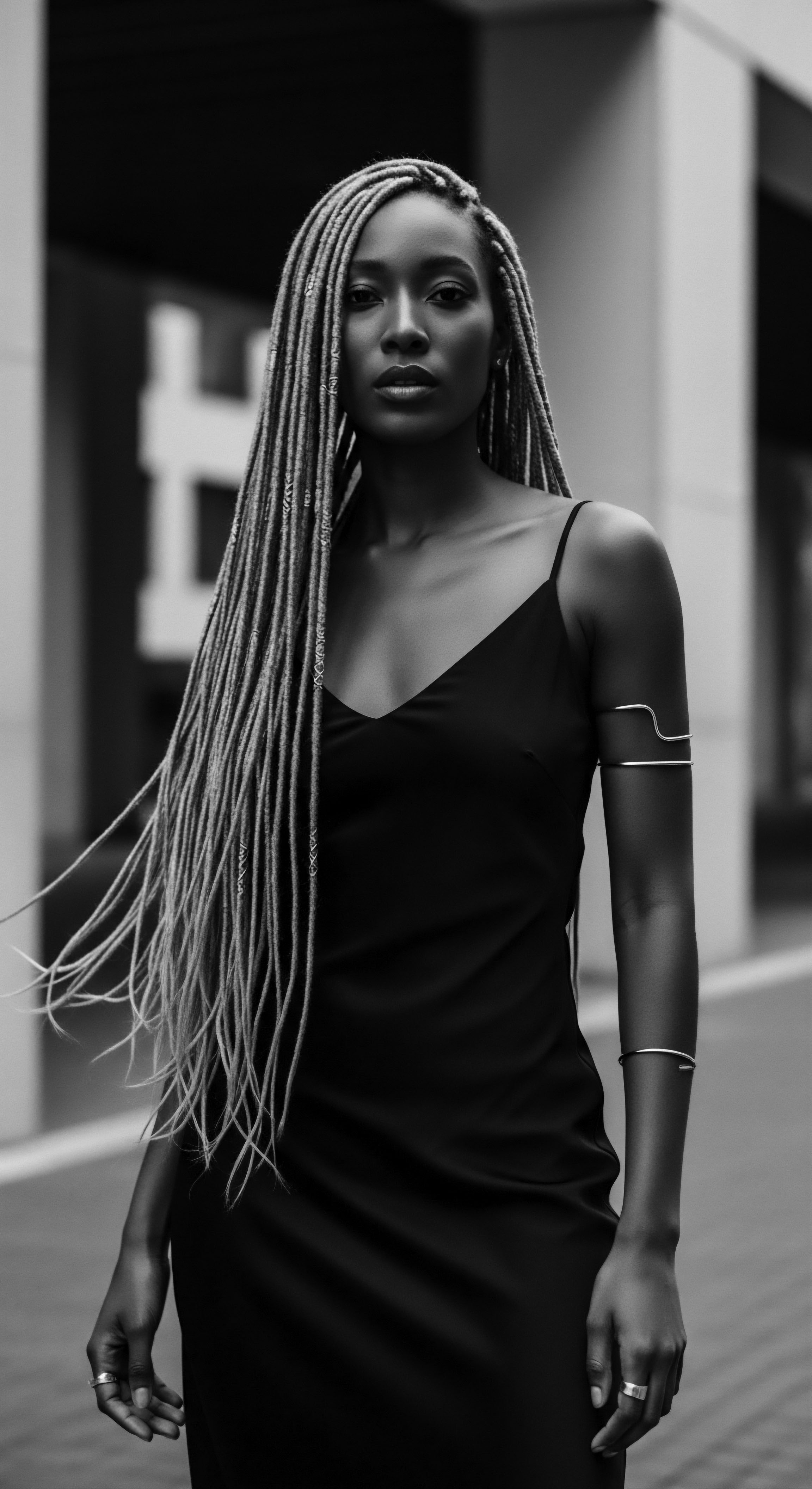
References
- Houlberg, Marilyn. “Social Hair ❉ Yoruba Hairstyles in Southwestern Nigeria.” In Fabrics of Culture ❉ The Anthropology of Clothing and Adornment, edited by Justine M. Cordwell and Ronald A. Schwarz, 349-397. The Hague, Mouton Publishers, 1979.
- Adeoye, C. L. Ìgbàgbọ́ àti Ẹ̀sìn Yorùbá (Yoruba Belief and Religion). Ibadan, Nigeria ❉ Evans Brothers, 1980.
- Johnson, Samuel. The History of the Yorubas. Lagos, Nigeria ❉ CMS Bookshops, 1921.
- Drewal, Henry John, John Pemberton III, and Rowland Abiodun. Yoruba ❉ Nine Centuries of African Art and Thought. New York ❉ The Center for African Art and Harry N. Abrams Publishers Inc. 1989.
- Lawal, Babatunde. The Gelede Spectacle ❉ Art, Gender, and Social Harmony in African Culture. Seattle and London ❉ University of Washington Press, 1996.
- Dopamu, P. A. “Yoruba Magic and Medicine and their Relevance for Today.” Journal of the Nigerian Association of Religious Studies 4 (1979) ❉ 3-20.
- Abiodun, Rowland. Ọ̀ṣun across the Waters ❉ A Yoruba Goddess in Africa and the Americas. Bloomington ❉ Indiana University Press, 2014.
- Sherrow, Victoria. Encyclopedia of Hair ❉ A Cultural History. Westport, CT ❉ Greenwood Press, 2006.
- Abbasi, Abdul Hanan, et al. “Ethnobotanical Survey of Medicinal Plants Used for Skincare in Bahawalpur Region, Pakistan.” Pakistan Journal of Botany 42, no. 5 (2010) ❉ 3327-3333.
- Rahman, Mohd Saidur, et al. “Ethnobotanical Uses, Phytochemistry and Pharmacological Activities of Pterocarpus marsupium ❉ A Review.” Pharmacognosy Journal 10, no. 6s (2018) ❉ s1-s8.
